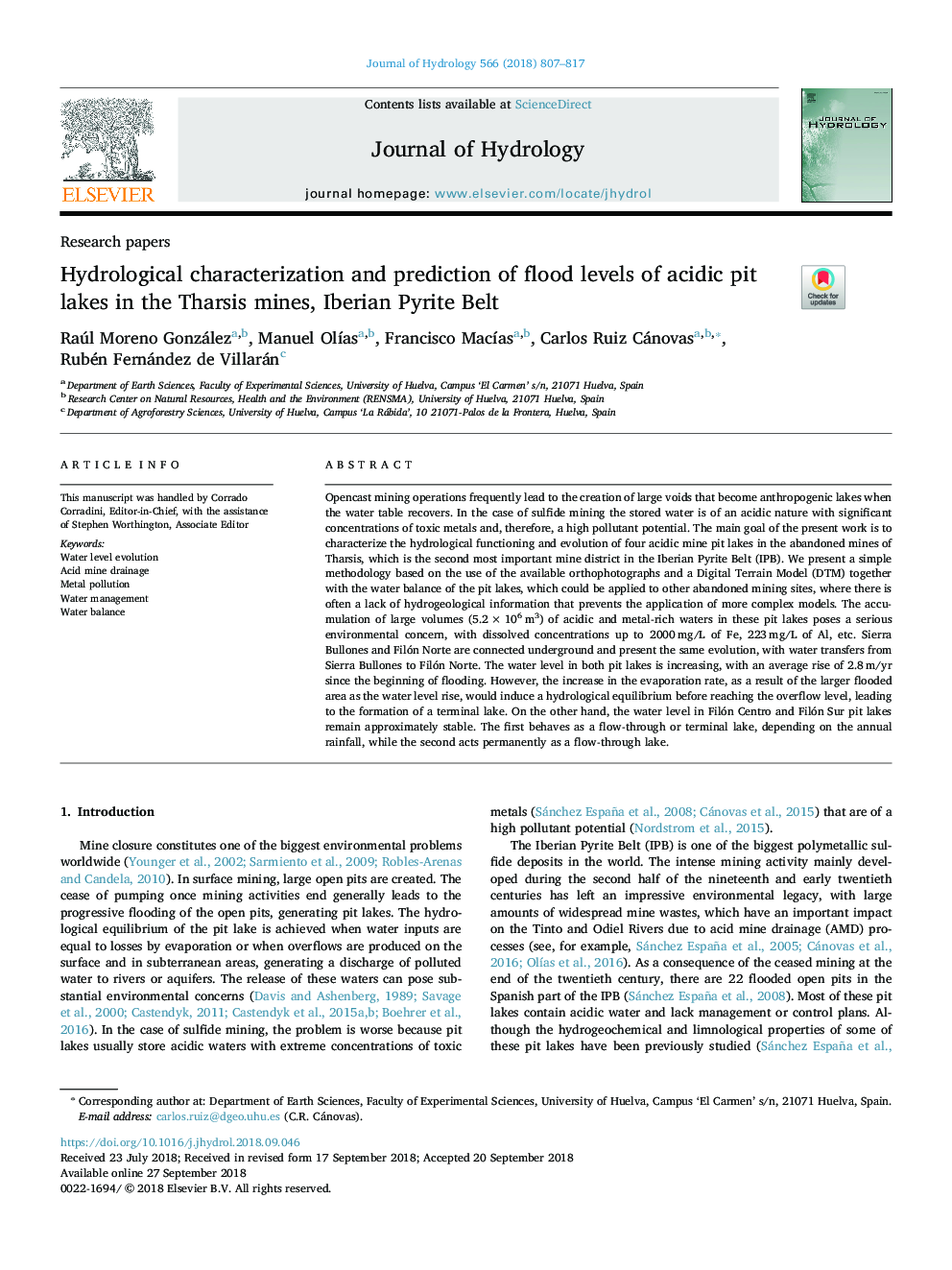| Article ID | Journal | Published Year | Pages | File Type |
|---|---|---|---|---|
| 11024772 | Journal of Hydrology | 2018 | 11 Pages |
Abstract
Opencast mining operations frequently lead to the creation of large voids that become anthropogenic lakes when the water table recovers. In the case of sulfide mining the stored water is of an acidic nature with significant concentrations of toxic metals and, therefore, a high pollutant potential. The main goal of the present work is to characterize the hydrological functioning and evolution of four acidic mine pit lakes in the abandoned mines of Tharsis, which is the second most important mine district in the Iberian Pyrite Belt (IPB). We present a simple methodology based on the use of the available orthophotographs and a Digital Terrain Model (DTM) together with the water balance of the pit lakes, which could be applied to other abandoned mining sites, where there is often a lack of hydrogeological information that prevents the application of more complex models. The accumulation of large volumes (5.2â¯Ãâ¯106â¯m3) of acidic and metal-rich waters in these pit lakes poses a serious environmental concern, with dissolved concentrations up to 2000â¯mg/L of Fe, 223â¯mg/L of Al, etc. Sierra Bullones and Filón Norte are connected underground and present the same evolution, with water transfers from Sierra Bullones to Filón Norte. The water level in both pit lakes is increasing, with an average rise of 2.8â¯m/yr since the beginning of flooding. However, the increase in the evaporation rate, as a result of the larger flooded area as the water level rise, would induce a hydrological equilibrium before reaching the overflow level, leading to the formation of a terminal lake. On the other hand, the water level in Filón Centro and Filón Sur pit lakes remain approximately stable. The first behaves as a flow-through or terminal lake, depending on the annual rainfall, while the second acts permanently as a flow-through lake.
Related Topics
Physical Sciences and Engineering
Earth and Planetary Sciences
Earth-Surface Processes
Authors
Raúl Moreno González, Manuel OlÃas, Francisco MacÃas, Carlos Ruiz Cánovas, Rubén Fernández de Villarán,
